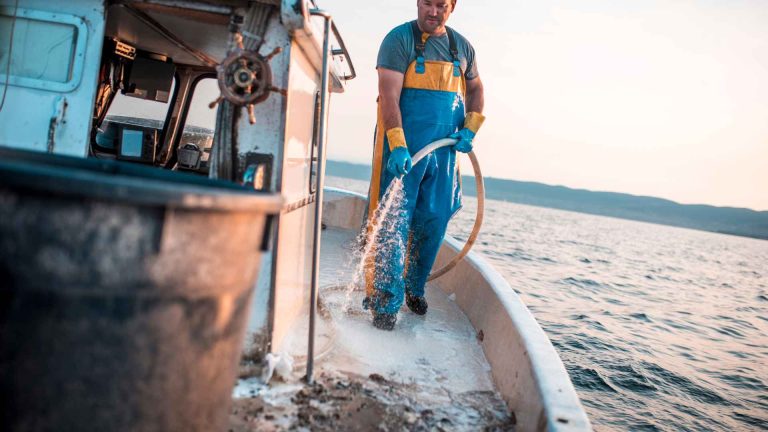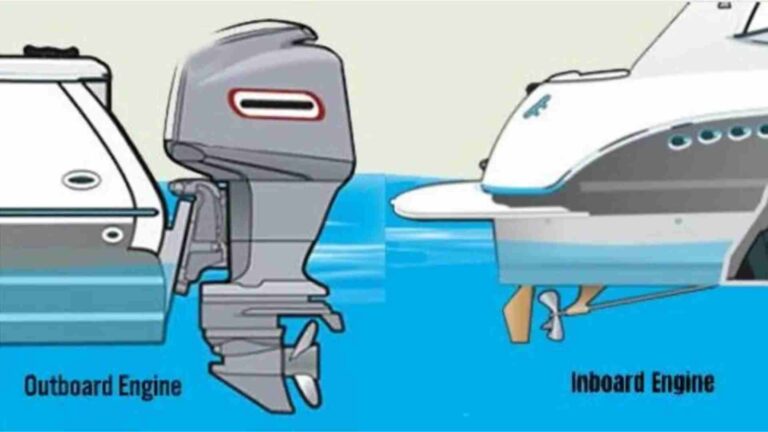How Do Boats Float on Water: The Science Behind Buoyancy
The mesmerizing sight of boats gliding gracefully over the water has captivated human curiosity for centuries. The ability of these vessels to stay afloat, even while carrying considerable weight, has sparked wonder and intrigue. It is through the marvels of buoyancy that boats achieve this seemingly magical feat, and understanding this scientific principle unravels the mystery behind their effortless floatation.
Buoyancy, the force that enables boats to remain buoyant and defy gravity’s pull, lies at the heart of this enigma. In this article, we embark on an informative journey to explore the intricacies of buoyancy and how it works to keep boats afloat. As we delve into the principles of physics and fluid dynamics, we will unlock the secrets that underpin the captivating spectacle of boats gracefully navigating the water’s surface. So, let us set sail on this exploration to uncover the science behind how boats float with ease and grace.
Archimedes’ Principle as the Foundational Concept Behind Buoyancy.

At the heart of the science behind boats floating on water lies Archimedes’ Principle, a fundamental concept in fluid dynamics. This ancient principle, formulated by the Greek mathematician Archimedes, serves as the foundational explanation for buoyancy.
Archimedes’ Principle states that when an object is submerged in a fluid (like water), it experiences an upward buoyant force that is equal in magnitude to the weight of the fluid displaced by the object. In simpler terms, when an object enters the water, it pushes aside an amount of water equal to its own volume. The displaced water exerts an upward force on the object, which we call the buoyant force.
This buoyant force has a crucial role in enabling boats to float on water. When a boat is placed in the water, its hull displaces an amount of water that matches its own volume. This displaced water exerts an upward force on the boat, countering the force of gravity pulling the boat downwards. As long as the buoyant force is greater than or equal to the boat’s weight, the boat will remain afloat, seemingly defying gravity.
It is this exquisite interplay of forces—gravity pulling the boat downwards and the buoyant force pushing it upwards—that allows boats to maintain their equilibrium on the water’s surface. As we uncover more about the principles of buoyancy, we will gain a deeper appreciation for the seamless harmony between science and nature, witnessed every time a boat glides effortlessly over the water.
In-Depth Explanation of Displacement in the Context of Boat Floating
In the context of boat floating, displacement is a key concept that plays a pivotal role in the phenomenon of buoyancy. Displacement refers to the act of pushing aside water as a boat enters the water. It is this displacement of water that creates the upward buoyant force, allowing the boat to float.
When a boat is placed on the water’s surface, its hull comes into contact with the water. The shape and volume of the boat’s hull are purposefully designed to displace a specific amount of water, equal to the boat’s own weight. This design is crucial in ensuring that the upward buoyant force generated by the displaced water is sufficient to counteract the boat’s weight and keep it afloat.
To achieve effective displacement, boat designers carefully consider the hull’s shape and volume. A hull with a greater volume will displace more water, resulting in a larger buoyant force and greater capacity to carry weight. Conversely, a smaller hull volume will displace less water and have a lower buoyant force, limiting the boat’s carrying capacity.
The shape of the hull is also critical for efficient displacement. Boats with hulls that have a wide and rounded bottom displace a larger volume of water, providing excellent stability and buoyancy. On the other hand, boats with narrower and flatter hulls may displace less water, making them less buoyant and potentially less stable.
Moreover, the distribution of weight within the boat can influence its displacement and stability. A well-balanced boat with an even weight distribution will displace water evenly, ensuring optimal buoyancy. Uneven weight distribution, on the other hand, can lead to inefficient displacement and compromised stability.
In essence, displacement is the cornerstone of buoyancy in boats. By cleverly designing hulls to displace water effectively, boat builders harness the principles of Archimedes’ Principle, ensuring that boats stay afloat with grace and stability. Understanding the art of displacement illuminates the science behind boats’ effortless floatation and how their design and shape contribute to their buoyant prowess on the water.
Different Types of Hulls and Their Impact on Buoyancy

The design of a boat’s hull significantly impacts its buoyancy and overall performance on the water. Boats can be classified into two primary types based on their hull design: displacement hulls and planing hulls. Each type offers distinct characteristics that influence buoyancy and stability under different conditions.
Displacement Hulls:
Displacement hulls are designed to push water aside as they move forward, displacing an amount of water equal to their own weight. These hulls are typically characterized by their V-shaped or rounded bottoms and are commonly found in sailboats, trawlers, and slower-moving vessels. The primary focus of displacement hulls is to ensure efficient buoyancy and stability at lower speeds.
Due to their displacement-focused design, these hulls create minimal wake and resistance, making them ideal for navigating at lower speeds. The buoyant force generated by the displaced water allows these boats to stay afloat while maintaining a steady and stable ride, even in rough waters. Displacement hulls are preferred for long-distance cruising and fuel efficiency, as they require less power to move through the water.
Planing Hulls:
Planing hulls, on the other hand, are designed to rise on the water’s surface as speed increases, utilizing the hydrodynamic lift to enhance buoyancy during faster navigation. These hulls typically have flatter bottoms and are commonly found in powerboats, speedboats, and watercraft meant for high-speed operation.
As planing hulls gain speed, they create enough lift to rise above the water’s surface, reducing the amount of hull in contact with the water. This reduces friction and resistance, allowing the boat to reach higher speeds with less effort. The increased buoyant force generated by the hydrodynamic lift provides excellent stability and control while planing.
While planing hulls offer impressive speed capabilities, they are less fuel-efficient at lower speeds due to increased resistance when not planing. Additionally, their design may result in a rougher ride in choppy waters compared to displacement hulls.
In conclusion, the choice between displacement hulls and planing hulls depends on the intended use and performance requirements of the boat. Displacement hulls excel in stability and fuel efficiency at lower speeds, while planing hulls are designed for high-speed navigation and dynamic handling. Understanding the characteristics and impact of each hull type on buoyancy allows boaters to select the most suitable design for their specific boating needs and preferences.
Role of Ballast in Maintaining Boat Stability and Buoyancy

Ballast plays a crucial role in maintaining boat stability and buoyancy, especially in sailboats and larger vessels. Ballast refers to the weight, often in the form of lead or other heavy materials, strategically placed in the keel of sailboats or the hull of larger vessels. The primary function of ballast is to lower the boat’s center of gravity, enhancing its stability and preventing excessive rolling or capsizing.
In sailboats, ballast is typically found in the keel, which is the heavy fin-like structure located at the bottom of the hull. The ballast in the keel serves two essential purposes. Firstly, it counterbalances the force exerted by the wind on the sails, preventing the boat from heeling excessively or being pushed over by the wind. Secondly, the weight of the ballast in the keel lowers the boat’s center of gravity, improving overall stability.
For larger vessels like yachts or ships, ballast is commonly placed inside dedicated compartments in the hull. These compartments, known as ballast tanks, can be filled with water to increase the vessel’s weight and lower its center of gravity. When the vessel needs to improve stability, water is pumped into these tanks to provide additional ballast.
Proper ballasting is critical for optimizing buoyancy and safety during sailing. Insufficient ballast can lead to reduced stability, making the boat more susceptible to capsizing or rolling excessively in rough seas. On the other hand, excessive ballast can hinder the boat’s performance and create unnecessary drag, compromising fuel efficiency.
The distribution and management of ballast are carefully considered during the design and operation of a boat. Sailors and boat operators must understand the importance of ballast and ensure its proper maintenance to maintain optimal stability and buoyancy during their sailing adventures. With a well-balanced and properly ballasted vessel, boaters can navigate with confidence and enjoy a smoother, safer experience on the water.
Factors Affecting Buoyancy
A boat’s buoyancy can be influenced by several factors that impact its trim, draught, and overall stability. Understanding these factors is essential for maintaining safe and efficient sailing conditions.
- Load Distribution: The distribution of weight and cargo on board significantly affects a boat’s buoyancy and stability. Proper load distribution is crucial to maintain an even balance and prevent excessive leaning or heeling. Unevenly distributed weight can cause one side of the boat to be lower in the water than the other, leading to compromised stability and potential safety risks.
- Weight: The overall weight of the boat, including its structure, equipment, fuel, passengers, and cargo, plays a vital role in buoyancy. A boat’s design is intended to displace water equal to its weight, as per Archimedes’ Principle. If a boat is overloaded, it may not displace enough water to generate sufficient buoyant force, resulting in reduced stability and potential problems with flotation.
- Water Density: Water density can vary due to factors such as salinity and temperature. Seawater, which typically has higher salinity than freshwater, provides greater buoyancy due to its increased density. Conversely, colder water is denser than warmer water, affecting buoyancy calculations. These variations in water density can influence the boat’s draft and trim, necessitating adjustments in ballast or load distribution for optimal stability.
- Changes in Weight or Water Level: Changes in the weight on board, such as passengers moving around, or variations in the water level due to tides or loading/unloading cargo, can alter a boat’s buoyancy. Operators need to adapt to these changes by adjusting ballast or redistributing weight to maintain proper buoyancy and stability.
- Hull Shape and Design: The shape and design of a boat’s hull significantly impact its buoyancy and stability. Different hull types, as discussed earlier, have distinct characteristics that influence buoyancy. The hull’s shape can also affect how the boat reacts to waves and choppy waters, influencing its stability.
- Wind and Weather Conditions: Strong winds can exert lateral forces on a boat’s hull, causing it to heel or lean. Boats with proper buoyancy and stability can handle these forces better, ensuring a safer and more controlled ride.
In conclusion, numerous factors affect a boat’s buoyancy, trim, draught, and overall stability. Sailors must be mindful of load distribution, weight, water density, and changes in conditions to maintain a well-balanced and safely operating vessel. Adapting to these factors ensures that the boat remains buoyant and stable, providing a comfortable and secure sailing experience in various conditions.
Safety and Buoyancy Considerations

Maintaining proper buoyancy is paramount for ensuring safe and enjoyable boating experiences. Boaters should take specific safety considerations and precautions to optimize their vessel’s buoyancy and overall stability.
- Regular Maintenance and Inspections: Regular maintenance and inspections are essential to ensure the boat’s buoyant capabilities are not compromised. Check the hull for any signs of damage, such as cracks or leaks, which can impact buoyancy. Additionally, inspect all fittings, seals, and ballast systems to prevent potential water ingress or loss of buoyancy.
- Adherence to Weight Limits: Adhering to the manufacturer’s weight limits and load capacity specifications is crucial for preserving the boat’s proper buoyancy. Overloading the boat with excessive weight can lead to reduced buoyancy, diminished stability, and potentially hazardous conditions. Distribute weight evenly and avoid exceeding the recommended load capacity to maintain optimal buoyancy.
- Understanding Emergency Procedures: Understanding the principles of buoyancy is vital for proper emergency procedures and handling in case of water ingress or flooding. Should water enter the boat due to unforeseen circumstances, such as rough weather or hull damage, it’s essential to act quickly and decisively. Keep in mind that water entering the boat will displace air and reduce buoyancy, potentially leading to instability or capsizing. Knowing how to respond in these situations, such as activating bilge pumps or securing the boat’s position, is critical for maintaining buoyancy and ensuring safety.
- Buoyancy Aids and Safety Equipment: Carry buoyancy aids and essential safety equipment, such as life jackets and flotation devices, for all occupants on board. In the event of an emergency, these items can significantly enhance personal buoyancy and increase the chances of survival if the boat’s buoyancy is compromised.
- Boating Education and Training: Proper boating education and training are invaluable for understanding buoyancy principles, handling emergencies, and ensuring safe navigation. Boaters should undergo certified boating courses that cover buoyancy and safety protocols to enhance their knowledge and preparedness on the water.
- Weather and Water Conditions: Always be aware of the current weather and water conditions before embarking on a boating trip. Rough seas, strong currents, or adverse weather can impact buoyancy and stability. Avoid navigating in hazardous conditions and ensure the boat is appropriately equipped to handle potential challenges.
In conclusion, prioritizing buoyancy and safety is essential for all boaters. By performing regular maintenance, adhering to weight limits, understanding buoyancy principles, and being prepared for emergencies, boaters can ensure their vessels remain buoyant and stable, providing a safe and enjoyable experience on the water. A well-maintained and buoyant boat sets the stage for worry-free exploration and enjoyment of the waterways.
Watch How do ships float? (3D Animation) | Video
How do boats float on water? Boats float on water due to the principle of buoyancy.
When a boat is placed in water, it displaces an amount of water equal to its weight. The displaced water exerts an upward force on the boat known as the buoyant force. As long as the buoyant force is greater than the boat’s weight, it will float on the water’s surface.
What is buoyancy?
Buoyancy is the force that allows objects to float in a fluid, such as water. It is a result of Archimedes’ Principle, which states that any object submerged in a fluid experiences an upward force equal to the weight of the fluid it displaces.
What factors affect a boat’s buoyancy?
Several factors impact a boat’s buoyancy, including its shape, volume, weight distribution, water density, and the presence of ballast. The boat’s hull design and material, as well as the amount of weight it carries, influence how effectively it displaces water and stays afloat.
Do all boats float the same way?
Different types of boats float in various ways, depending on their hull design and intended purpose. Some boats, like displacement hulls, are designed to push water aside as they move, providing stability for slower-moving vessels. Planing hulls, on the other hand, rise on the water’s surface at higher speeds, using hydrodynamic lift to maintain buoyancy.
Can a boat sink?
While boats are designed to float, certain circumstances can compromise their buoyancy and lead to sinking. Damage to the hull, excess water intake, or overloading beyond the weight capacity are some of the factors that can reduce buoyancy and cause a boat to sink. Proper maintenance, adherence to weight limits, and prompt response to emergencies are crucial to prevent sinking and ensure safe boating.
Conclusion

In conclusion, the phenomenon of boats floating on water is attributed to the principle of buoyancy, governed by Archimedes’ Principle. By displacing an amount of water equal to their weight, boats experience an upward buoyant force that keeps them afloat. Understanding the principles of buoyancy is paramount for safe and enjoyable boating experiences.
Throughout the article, we explored various factors affecting buoyancy, such as hull design, weight distribution, and ballast. Different types of boats, like displacement and planing hulls, float in distinct ways, catering to their intended purposes.
Appreciating the marvel of buoyancy in boat design enables boaters to prioritize safety and responsible practices. By adhering to weight limits, conducting regular maintenance, and being prepared for emergencies, readers can ensure their vessels remain buoyant and stable during their boating adventures.
With the knowledge gained from this explanation, readers can now better comprehend the science behind boats floating on water. As they set sail, they can navigate the waters with confidence, appreciating the principles that allow boats to gracefully and effortlessly stay afloat, enriching their boating experiences and ensuring safe voyages.
Share 10 Best Boats Under $100K: Affordable & High-Quality Choices with your friends and Leave a comment below with your thoughts.
Read How Does a Yacht Autopilot Work: An In-Depth Explanation until we meet in the next article.






